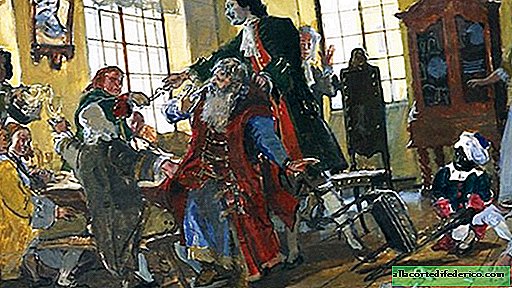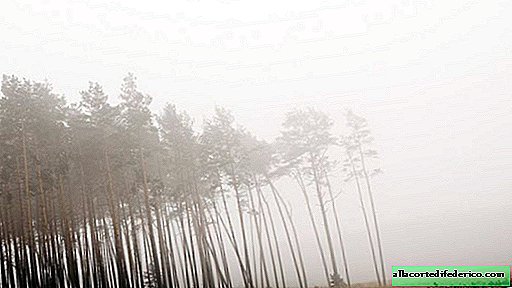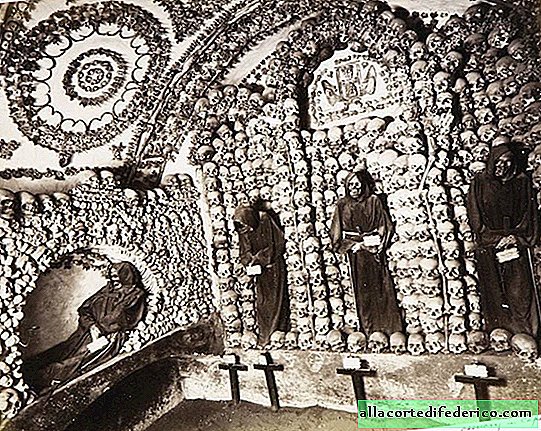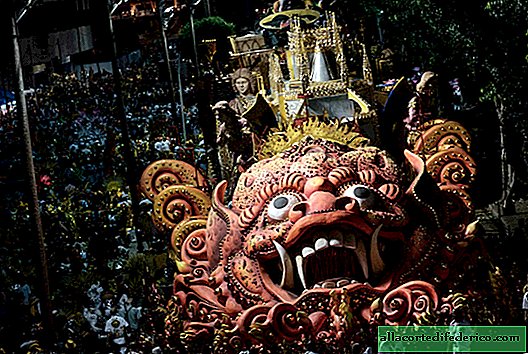The history of the beard: why in Russia it was impossible to shave, but under Peter they got rid of it
How do you feel about beard fashion? What is this, a revival of old customs?
In ancient Russia, to see a man without a beard was wild. It's like a lady with a beard nowadays. Beardless men in Russia were considered frivolous, unreliable, incapable of procreation. In general, the girls tried to avoid them. And if such a thing fell into their misfortune, they laughed after him: "Barefoot snout, go away!"
So it was in pre-Petrine times. Evil tongues said that Tsar Peter the Great did not grow a beard. Maximum antennae. When he returned from a foreign tour, he was seized by the idea of Europeanizing the country. And the first thing that came under sanctions was his beard that irritated him. In 1698 a decree was issued "On wearing German dress, on the shaving of beards and mustaches, on the walking of schismatics in the garment indicated for them." This was shocking news.
 "It is ordered in Russia to shave beards." Russian lubok
"It is ordered in Russia to shave beards." Russian lubokPeter himself cut off the first beards to his inner circle. When they realized that shaving beards is not easy and people are resisting, they decided to introduce a special tax. God be with you, if you want to wear beards - wear it, but it will be expensive.
Introduced four categories of state duty. The first included public servants and the city nobility. They took 600 rubles from them. The second included traders. They gave to the treasury 100 rubles each. Residents of urban suburbs - 60 rubles each. and a servant, coachman - 30 rubles each. For comparison - 30 rubles was the annual salary of an infantryman.
The peasants did not pay taxes, but at the entrance to the city they had to give a penny to the treasury for each visit with a beard.
 "Peter the Great cuts the beards of the boyars." Artist D. Belyukin, 1985
"Peter the Great cuts the beards of the boyars." Artist D. Belyukin, 1985In Russia, the beard was treated as a shrine. In the Pskov Judicial Charter, for punishing a beard, the punishment was worse than for murder. For the murder, a fine was paid one ruble, and for damage to the beard - 2 rubles.
There was no worse punishment than shaving. When ambassadors arrived at the prince with improper offers, they silently cut off their beards and sent them home. And words are not needed.
So, why Russian could not be deprived of beards:
- Beard - The wealth of the KIND. The more abundant the facial hair, the richer the family, the stronger the clan and the more successful the descendants.
- A beard is a sign of courage. A warrior is impossible without her - they were not allowed to go to war. Men from childhood have been convinced that their beard makes them fearless.
- The beard is a symbol of spiritual power. A man - an exponent of the power of the family, carries the heritage of ancestors. In addition, God created it in his own image, which means that the beard is a necessary attribute. Her shaving is a violation of divine laws.
- The bearded man in the family is the master in the house.
So it was with us. In general, the beard had many uses in the history of mankind.
 Ancient man
Ancient manPrehistoric people grew beards for warmth, intimidation and protection. Facial hair kept the body temperature of an ancient person, and also protected from sand, dirt and many other elements that can penetrate the body through the mouth. In addition, she gave a frightening appearance, as if visually enlarging the jaw.
From 3000 BC until 1580 BC the Egyptians used a fake beard made of gold. They tied this fake beard, fixing it with a knot on the back of the head.
Representatives of Mesopotamian civilizations took great care of their beards. They were the first to consume foods such as beard oil to make their vegetation look healthy and silky. They also formed their beards with the help of ancient curling irons - created curls, curls, imparted wavy hair. The Assyrians painted them black, and the Persians painted orange-red. In ancient times, in Turkey and India, when someone had a long beard, this was considered a symbol of wisdom and dignity.
In Greece, a beard was a sign of honor. The ancient Greeks used to force beards with forceps to create curls. A beard cut was used only as a punishment.
Around 345 BC e. Alexander the Great ruled that soldiers cannot have a beard. He was afraid that the enemies would clutch at the beards of the Greeks and would use them against them during the battle.
The ancient Romans preferred their beards to be cut and groomed.
 Portrait of a Roman
Portrait of a RomanA Roman named Lucius Tarquinius Priscus encouraged the use of razors to carry out hygiene reform in the city in 616-579 BC. Despite the fact that Priscus tried to encourage shaving, it was still not generally accepted until 454 BC. In 454 BC a group of Greek hairdressers went from Sicily to main Italy. They opened hairdressers, which were located on the main streets of Rome. These hairdressers were usually used only by people who did not have slaves. If a person had a slave, then he cut and shaved his master. Over time, shaving became a trend in ancient Rome, but philosophers retained their beards regardless of trend.
Anglo-Saxon tribes did not shave their beards until the advent of Christianity in the seventh century.
In England, titled persons wore a mustache until 1066-1087. AD until William the First Act required them to shave in Norman fashion.
As soon as the Crusades began, the beards returned to everyday life. For four centuries, any vegetation was allowed. As in our time, men could freely choose what to wear on their faces: beards, mustaches or a clean shave. In 1535, the beard again entered European fashion. Different styles and lengths of beards appeared. In 1560, English nobles starch their beards so that they are sharp and neat.
Men used lipstick and wax to shape their beards. Every self-respecting sir always carried a special brush or comb for his beard. In addition, special fasteners for the beard and mustache were used while the men slept.
Over the centuries, mankind has come up with many styles of wearing a beard. For example, Abraham Lincoln's style is called the "chin screen". The hair on the beard is so long that it hangs down.
 Abraham Lincoln
Abraham LincolnWriter and essayist Henry David Thoreau has Wandering Jim on his face.
 Henry David Thoreau
Henry David ThoreauThe writer Henry Longfellow - "Elongated Dutch".
 Henry Longfellow
Henry Longfellow"Shovel Beard" by artist Vasily Vereshchagin.
 "Portrait of Vasily Vereshchagin." I. Kramskoy. 1883
"Portrait of Vasily Vereshchagin." I. Kramskoy. 1883 According to the results of a sociological interview conducted by experts from New Zealand and Canada, it was found that the bulk of the girls do not like a beard, but a slight unshaven face of the guy with whom she will kiss.
Do you like beard?

















